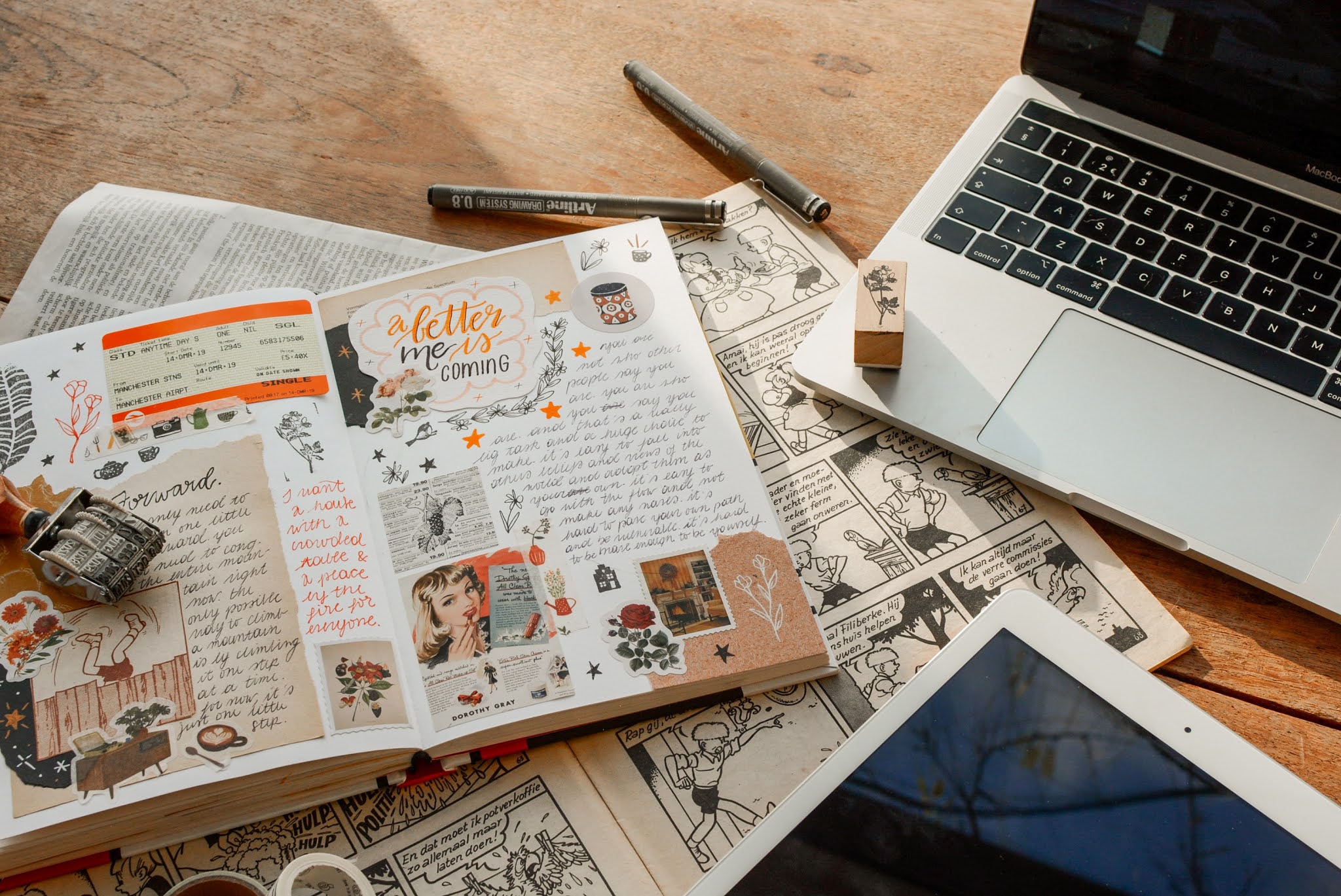Up until last year, one of my most popular posts was titled "A Look Into My Bullet Journal", which you can check out if you're interested! I raved about it being the best purchase of 2018, about it being so helpful for my organisation and productivity, and how excited I was to be using it. Well, if it had all those benefits and was so great, why did I stop?
I had initially started off with too many spreads to count, all of them done intricately and aesthetically so it'd look good for the 'gram. As time wore on, I realised I simply couldn't be bothered with always drawing things out when art isn't a strength of mine (those monthly covers were always a battle). I was always trying my best to imitate all the big bullet journal YouTubers I adored, but wasn't ever satisfied with how my own creations turned out.
Once I realised this, I started making my spreads minimal and simple - simple lines, simple headers, and most importantly; no doodles or drawings. Instead of drawing out designs myself, I started buying stickers to decorate the journal with instead.
However, as time wore on and university became more and more busy, I found that I was using the journal as less of a "journal" and more of a glorified to-do list. I would skip certain days or even weeks and leave spreads completely empty, which wasted both paper and my time. To rectify this, I started to plan my time on a day-by-day basis.
Exam season is where I finally made the switch to digital planning.
I added all my exams into the calendar on my phone and planned out my day-to-day activities by using Google Keep. I didn't find use for the spreads any more and would forget to update my journal because everything was on Google Keep or my calendar anyway. Once I consciously made the switch over to digital planning, I forgot all about the bullet journal!
I've now evolved in which apps I use to digitally plan my time, so a blog post explaining all of that will be uploaded very soon! :)
So what does digital planning offer that bullet journaling doesn't?
1. IT'S MUCH MORE PORTABLE
One could argue that carrying around a bullet journal won't exactly weigh you down, but I personally found it a hassle to always remember to carry it. Having everything on my phone is just better because I always have it on me. If I need to confirm if I'm busy on a certain day, I can just check on my phone instead of flipping through a bunch of pages! The fact that all the apps I use sync up makes this process so smooth too.
2. IT'S CHEAPER
This varies greatly, but for me personally, buying specific pens and highlighters that don't bleed through, buying a new journal when the current one runs out, and buying the stickers are all things that will add up over time. My phone and laptop were one-time purchases that will last much longer than a physical journal.
3. IT'S SO MUCH NEATER
Something I hated about bullet journaling is how I'd need white-out right next to me should I make a mistake. If a date or event changed, it would take a lot of effort to correct. Plans can always change, and this aspect really put a damper on the bullet journaling experience. Now, I can essentially decorate my Notion (what I use now) easily and not be afraid to make a mistake, because Ctrl + Z is right there for me!
Those are the main arguments I have for switching over to digitally planning instead of bullet journaling. Both obviously have their own pros and cons, but when I weigh them up I have to say that digital planning is the winner here!
Do you plan with a bullet journal or plan digitally?
Save this pin for later!
Related Post: Keeping Myself Organised At Uni









